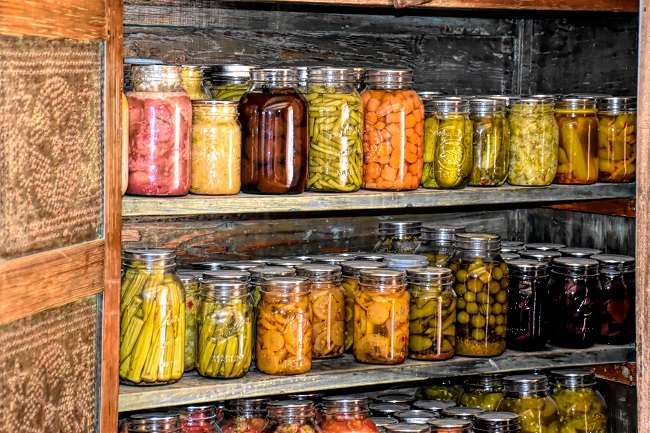
Give a gift that helps your favorite gardeners enjoy the flavors of their garden well past the end of the growing season. Both new and experienced gardeners often spend their gardening budget on plants and seeds, leaving little or none to invest in food preservation equipment and supplies. Prepare your favorite gardener for the next harvest season with some food preservation supplies and equipment.
Canning jars, freezer containers, spice cubes and airtight bottles for canning, freezing, and storing dehydrated herbs and vegetables are always welcome gifts. These supplies come in handy throughout the harvest season and are often in short supply when food preservation is at its peak.
Most gardeners grow their own fresh herbs and drying is the easiest way to preserve the harvest. Simply gather stems, secure them with a rubber band, and suspend in a warm, dry location. As the stems dry and shrink, the rubber band does as well, keeping the stems secure. Use a spring clothespin to secure the herb bundles to wires or other support. Create your own drying set up or invest in one of the commercial herb drying racks.
Herbs with high moisture content like basil, oregano, lemon balm and mints will mold if they are not dried quickly. If this has been a problem in the past, try placing a small bunch in a paper bag with holes in the side and the stems outside the bag. Hang these from a drying rack or speed up the process by using a microwave or food dehydrator.
Many gardeners grow onions, garlic, and potatoes for long-term storage. All three of these vegetables prefer cool, dark storage locations with good air circulation. Separate potatoes from onions that give off pungent gases that can taint the potatoes’ flavor. Avoid plastic bags that retain moisture and can shorten these vegetables storage life. Breathable potato and onion storage baskets have been used by gardeners for centuries.
Help your gift recipient turn their harvest into something delicious. Fermentation is a relatively easy preservation technique that has been used for thousands of years. Preserve some of your cucumbers as pickles, cabbage as sauerkraut, and berries as preserves with fermentation.
For most projects you just need the fruit or vegetables, water, salt, and spices. The desired ingredients are placed in a covered vessel like a Stoneware Pickling Crock. Weights are used to keep the fruit and vegetables submerged in water throughout the fermentation process.
Consider smaller fermentation kits for those with limited space. A three-liter glass jar with an air-lock lid and ceramic weights will allow you to ferment small quantities of vegetables.
Reduce the workload and boost the enjoyment for those making tomato juice, sauces, and soups. Hand crank and electric tomato presses, strainers and sauce makers allow gardeners to separate the skins and seeds from the tomato meat for quicker and easier processing.
Giving a gift that helps preserve flavors from the recipient’s garden will be useful and remembered for seasons to come.
Melinda Myers has written more than 20 gardening books, including Small Space Gardening. She hosts the “How to Grow Anything” DVD series and the Melinda’s Garden Moment TV & radio segments. Her website is MelindaMyers.com.
Related Articles & Free Vermont Maturity Subscription

How to Boost Your Indoor Garden’s Beauty
How to Grow Herbs Indoors for Year-round Enjoyment







Comment here